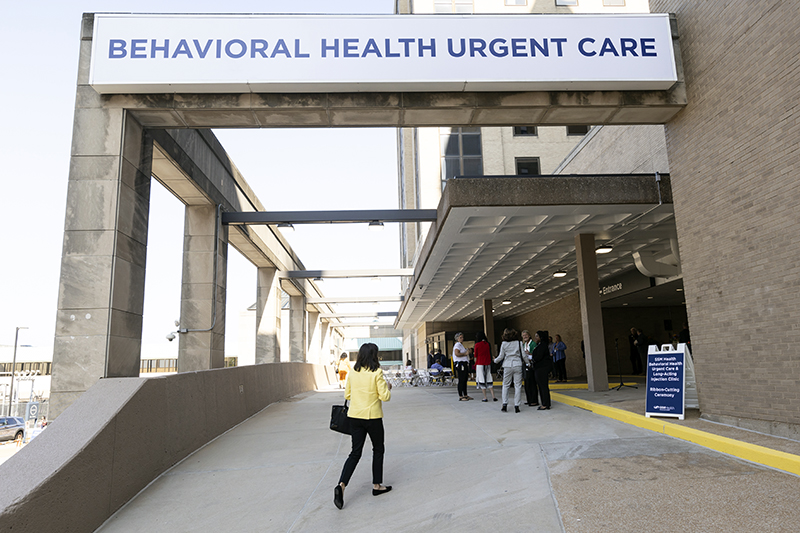Comparing Urgent Care Clinics: What Sets Our Clinic Apart
Wiki Article
Understanding the Role of Urgent Treatment in Offering Timely Treatment for Non-Life-Threatening Conditions
Urgent care centers have emerged as an important part of the healthcare landscape, attending to the instant requirements of patients with non-life-threatening problems. By using available and timely medical services, these centers successfully link the void between key care and emergency divisions. The implications of their role prolong past plain convenience, triggering a closer assessment of when and how these centers are used. Understanding the subtleties of immediate care can significantly affect person outcomes and the overall performance of healthcare distribution. What elements add to their growing importance in contemporary medicine?What Is Urgent Treatment?
Urgent care describes a category of clinical services made to resolve non-life-threatening problems that require prompt focus. These centers act as an intermediary in between health care physicians and emergency spaces, offering a convenient option for people that require prompt treatment without the considerable waiting times normally connected with emergency situation departments.Urgent care facilities are generally staffed by clinical experts, including physicians, nurse experts, and physician assistants, who are trained to diagnose and deal with a vast array of problems. Usual solutions provided by these centers include therapy for small injuries, diseases, and infections, as well as diagnostic examinations such as X-rays and research laboratory work.
Furthermore, urgent care facilities typically accept walk-in people, getting rid of the demand for consultations. In general, urgent care plays an important function in the healthcare system, making sure people can access vital clinical solutions quickly and successfully.

When to look for care at an immediate care facility instead of a main care doctor or an emergency situation space,Many individuals might find themselves unclear about. Immediate care is created to address non-life-threatening problems that call for timely focus but are not serious adequate to require an emergency clinic see.
Generally, one must consider urgent take care of concerns such as minor fractures, strains, cuts requiring stitches, or infections like urinary tract infections. In addition, cold or flu signs, rashes, and allergies can also be appropriately taken care of in this setting.
It is very important to note that urgent treatment is not suitable for dangerous emergency situations, such as upper body discomfort, problem breathing, or extreme blood loss, which require instant emergency situation area intervention.
Individuals who lack access to a health care medical professional or can not safeguard a prompt appointment may also benefit from urgent care services. Ultimately, understanding when to use urgent care can result in much more effective health care shipment, enabling individuals to get the proper level of care based on their specific health needs.
Advantages of Urgent Treatment Centers
Picking immediate care centers for non-life-threatening conditions offers numerous benefits that improve individual experience and availability. One main benefit is the reduced wait times contrasted to standard emergency clinic. Urgent treatment centers normally run on a first-come, first-served basis, enabling clients to receive prompt medical attention without the lengthy hold-ups typically related to healthcare facility settings.In addition, urgent care facilities offer view it extended hours, consisting of evenings and weekends, suiting individuals with varying timetables. This versatility guarantees that people can seek treatment when it is most practical for them, even more advertising timely intervention.

Moreover, these centers typically provide a comprehensive variety of solutions, including minor procedures and diagnostic examinations, all under one roofing. This combination of solutions not just improves the person experience however also cultivates a much more cohesive technique to managing non-life-threatening wellness problems, ultimately profiting overall individual outcomes.
Common Problems Dealt With
At urgent treatment facilities, a variety of non-life-threatening problems can be properly treated, supplying patients with easily accessible and prompt clinical assistance. These facilities are specifically adept at dealing with concerns that call for prompt interest however do not posture an immediate danger to life or arm or leg.Usual conditions treated at urgent care facilities consist of small injuries such as strains, sprains, and fractures. Additionally, they manage ailments like colds, influenza, and infections, consisting of urinary tract infections and sinusitis. Skin disease, ranging from rashes to insect bites, are likewise often attended to. Immediate treatment facilities are furnished to do essential analysis examinations, such as X-rays and lab examinations, enabling them to offer detailed care.
Moreover, urgent treatment carriers can carry out vaccinations, helping to stop the spread of transmittable illness - Urgent Care. They also supply services for small treatments, such as suturing wounds or draining pipes abscesses. By using these diverse solutions, urgent treatment centers play an essential function in bridging the void between health care and emergency solutions, guaranteeing patients obtain timely therapy for a broad array of conditions without the demand for long delay times normally associated with emergency situation rooms
Exactly How Urgent Care Supports Medical Care System
Urgent treatment centers play a vital role in sustaining the overall medical care system by reducing the worry on emergency departments and providing timely accessibility to medical care for non-life-threatening problems. By dealing with cases such as small injuries, infections, and ailments, immediate care centers enable emergency situation departments to focus on more critical clients calling for immediate interest.Additionally, visit this site immediate care centers improve medical care accessibility, providing extensive hours and an extra convenient alternative to standard key treatment setups. This ease of access is especially helpful for people who may not have a regular doctor or who need instant therapy beyond normal office hours. Consequently, urgent care centers efficiently decrease wait times and enhance individual contentment.
In addition, immediate treatment centers add to cost savings for both clients and the healthcare system by offering lower-cost services compared to emergency situation divisions. This economic effectiveness is crucial in an age of increasing healthcare costs, allowing people to obtain essential treatment without incurring inflated costs.
Conclusion
In conclusion, immediate treatment centers play a vital duty in the medical care system by providing prompt therapy for non-life-threatening problems. By bridging the gap in between main care and emergency situation spaces, these facilities make certain that individuals get timely clinical interest without the lengthy delay times normally connected with emergency situation divisions. The ease of access and performance of immediate care facilities contribute dramatically to easing the overall worry on discover here health care sources, improving patient end results, and promoting an extra effective medical care delivery system.Immediate treatment facilities have arised as an important component of the healthcare landscape, dealing with the prompt requirements of people with non-life-threatening problems. Immediate care sees usually sustain reduced out-of-pocket expenditures compared to emergency situation department sees, making treatment much more budget friendly for clients without endangering quality. Urgent treatment facilities are equipped to do essential diagnostic tests, such as X-rays and lab examinations, enabling them to offer detailed treatment.
By offering these diverse services, immediate treatment facilities play a vital role in connecting the void in between key care and emergency services, making sure people obtain prompt treatment for a broad variety of conditions without the requirement for lengthy delay times commonly associated with emergency rooms.
Furthermore, urgent care centers improve health care access, supplying extended hours and a much more practical option to standard key treatment setups.
Report this wiki page